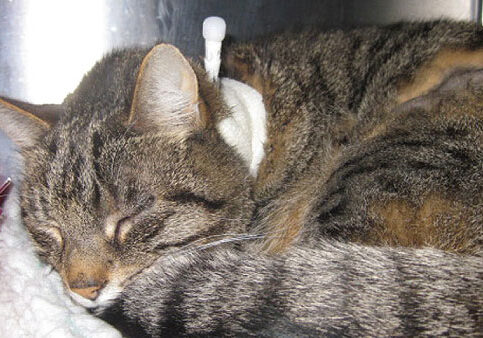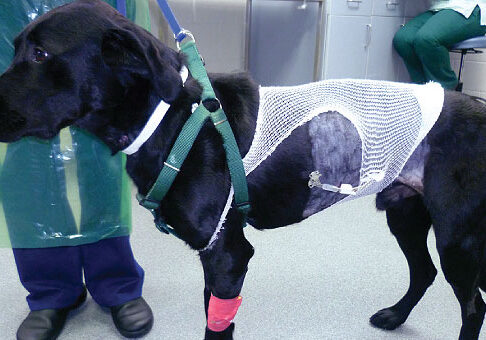Feeding Tubes: Complex is Our Everyday
Willows is one of Europe’s leading small animal referral centres. Our state-of-the-art hospital is led by internationally renowned Specialists, committed to providing the highest standards of veterinary care.
At Willows our Internal Medicine and Soft Tissue Surgery Specialists regularly place feeding tubes into patients for a range of medical and surgical conditions, providing a gold standard service in the management of dogs and cats who required them.
What is a Feeding Tube?
A feeding tube is a technique used by Vets to provide food to sick dogs and cats when they are not eating. One end of the tube is inside the gastrointestinal tract (i.e. oesophagus or stomach or intestine) and the other end of used to syringe food.
What are the Most Common Reasons to Place a Feeding Tube?
Feeding tubes are commonly used to help sick animals recover from an illness or injury. This includes medical conditions such as pancreatitis and after surgery for trauma (e.g. car accident). Most tubes are used for one to four weeks.
What are the Types of Feeding Tubes Available?
There are four main types of feeding tubes including:
- Naso-oesophageal; placed into the nose
- Oesophagostomy; placed into the oesophagus (food tube)
- Gastrostomy; placed into the stomach
- Jejunostomy; placed into the small intestine
The choice of tube used for a particular patient will depend on many factors.

Post-Operative Care: In many cases, dogs and cats with feeding tubes (e.g. oesophagostomy, gastrostomy) will be discharged home with the tube in place. Before going home the Specialists and Nurses will demonstrate provide a full demonstration of how to use the feeding tubes at home.

Long Term Management: Once the feeding tubes are no longer needed, they will be removed. Most of these tubes can be removed without sedation or anaesthesia. A dog with a gastrostomy tube, which allows food to be introduced straight into the stomach
How are Feeding Tubes Placed?
Most feeding tubes require a general anaesthetic to be placed (naso-oesophageal tubes can be placed without anaesthesia). Depending on the type of feeding tube, a small surgical or other procedure (e.g. endoscopy or camera study) is needed to place these tubes.
How are Feeding Tubes Placed?
A Specialist in Internal Medicine or Soft Tissue Surgery will discuss the type of feeding tube to be placed with the owner, including detailed information about the risks and possible complications.
To save this page as a PDF, click the button and make sure “Save as PDF” is selected.
Clinical Nutrition
Find out more
To talk you through some of the main areas associated with clinical nutrition at Willows, we have put together a range of information sheets.

